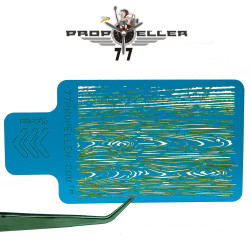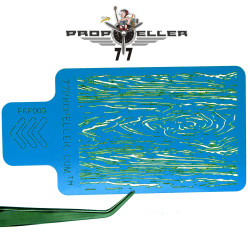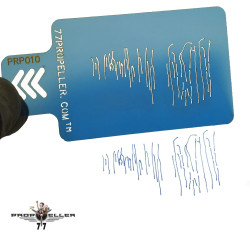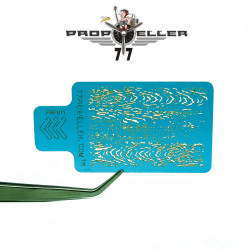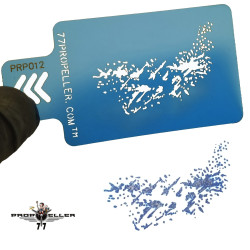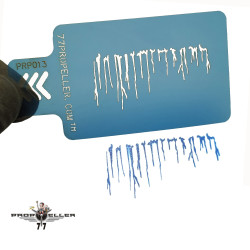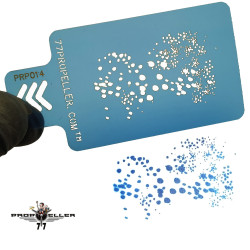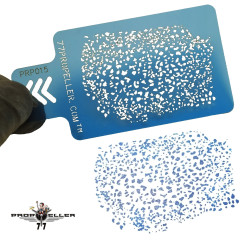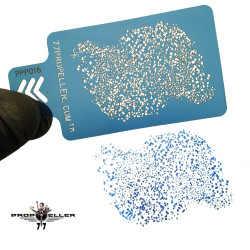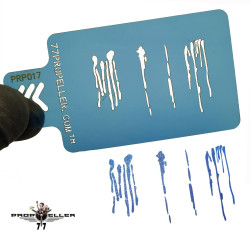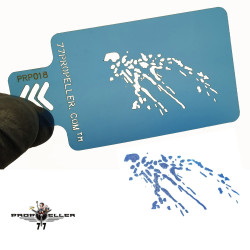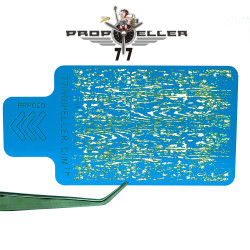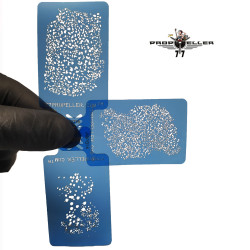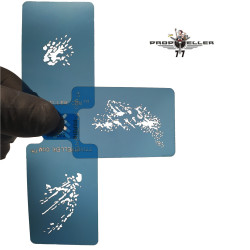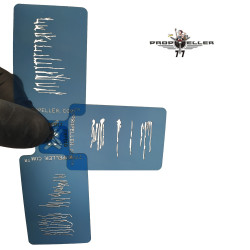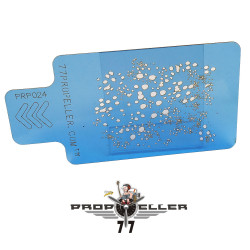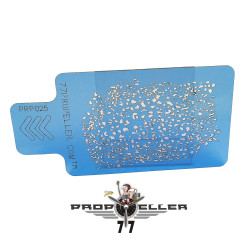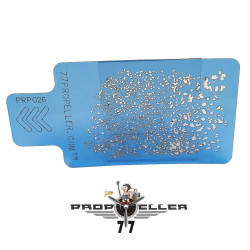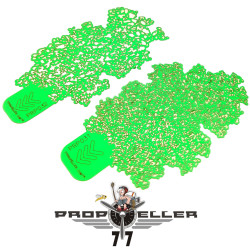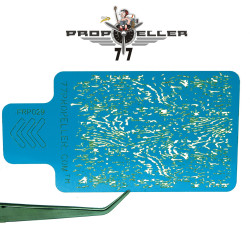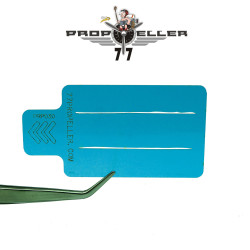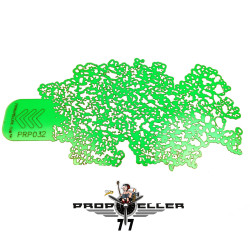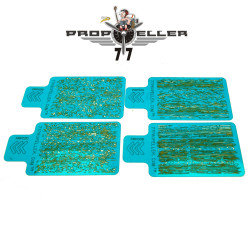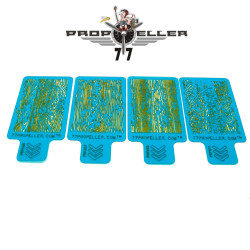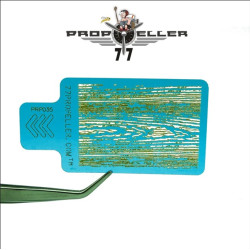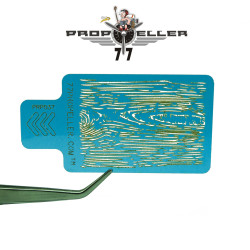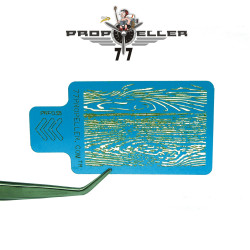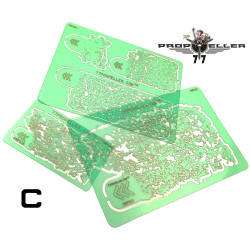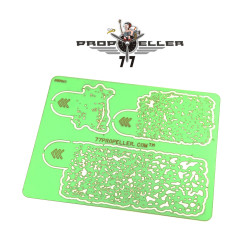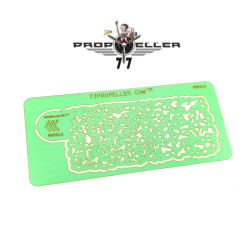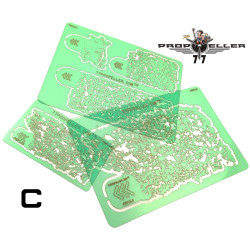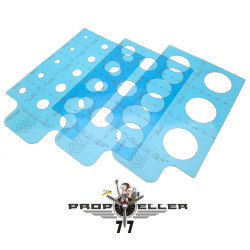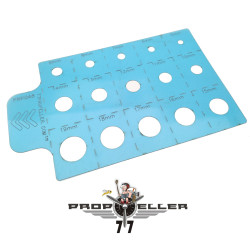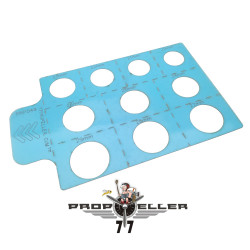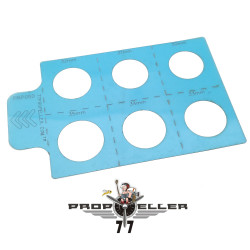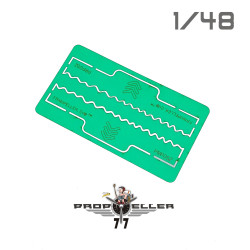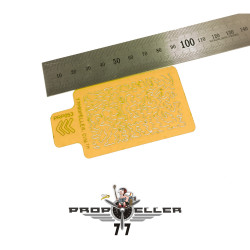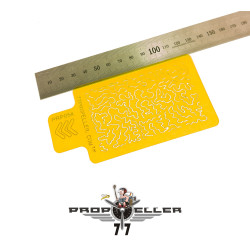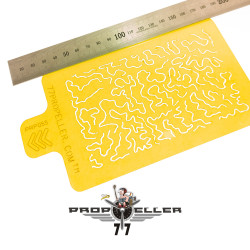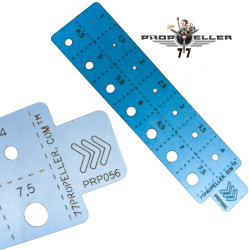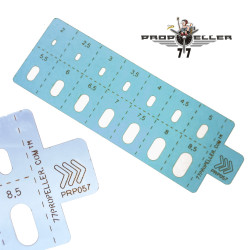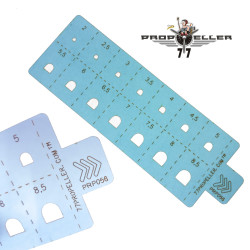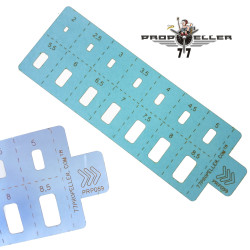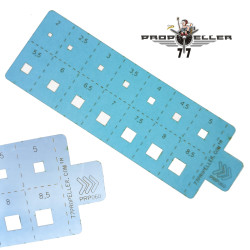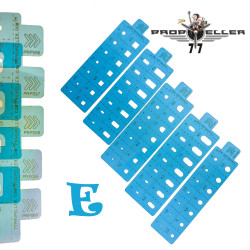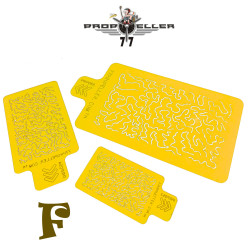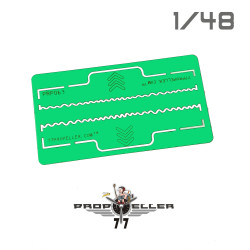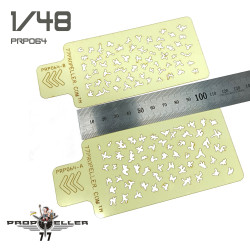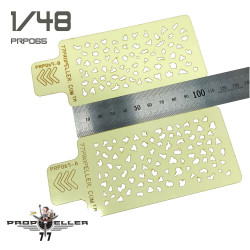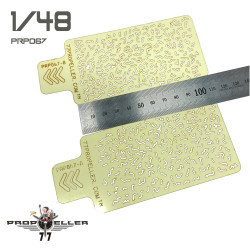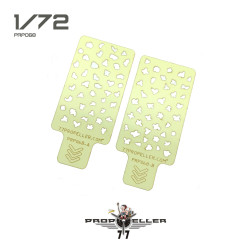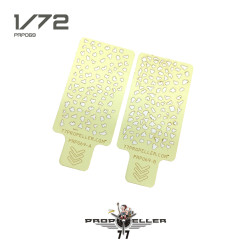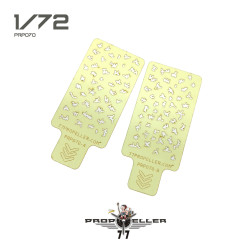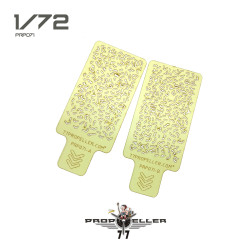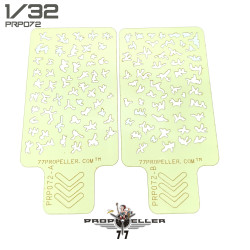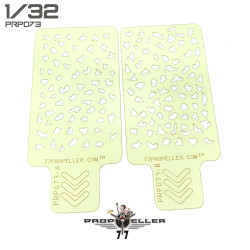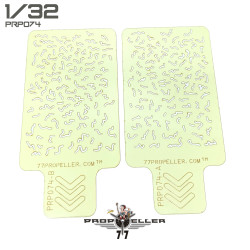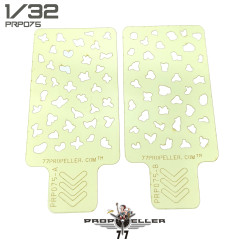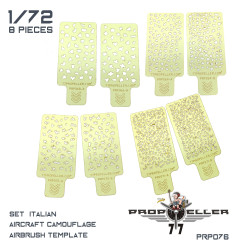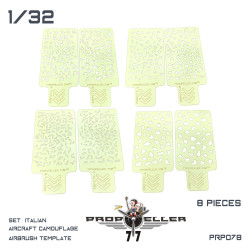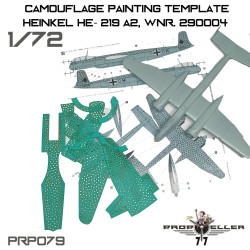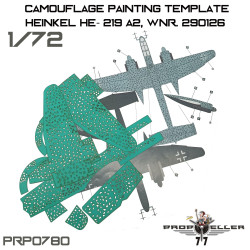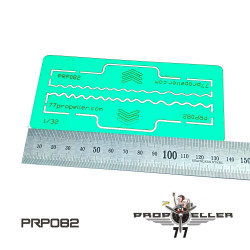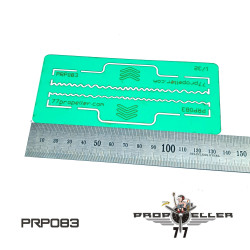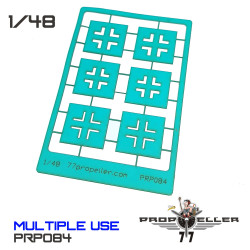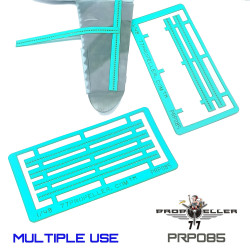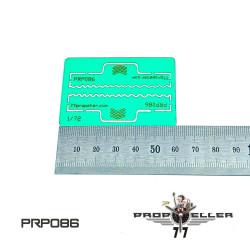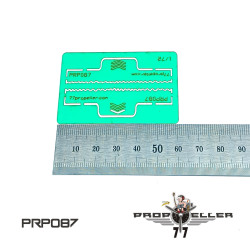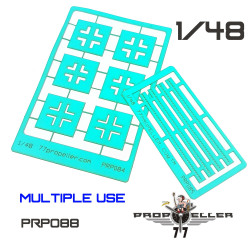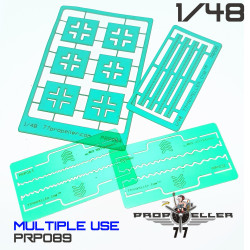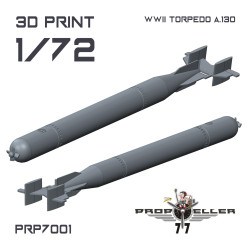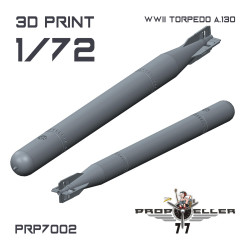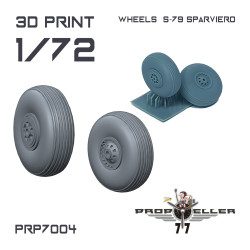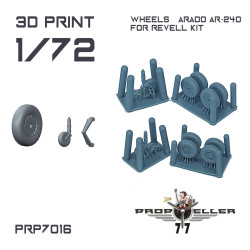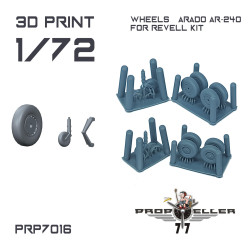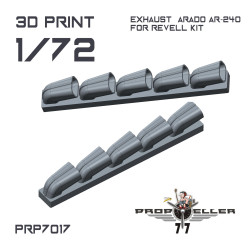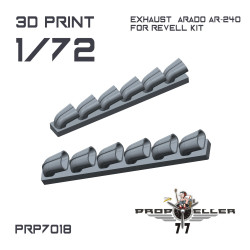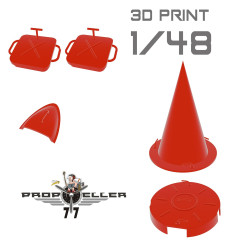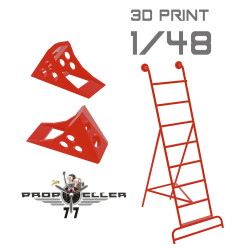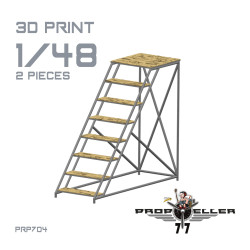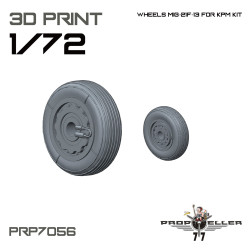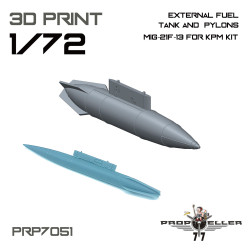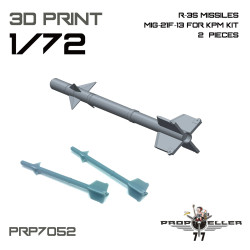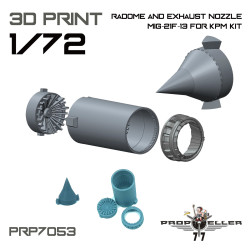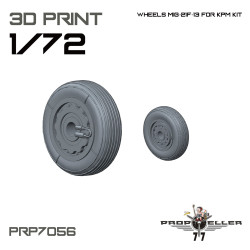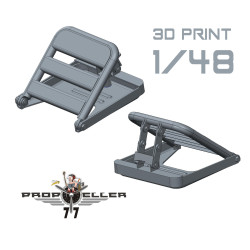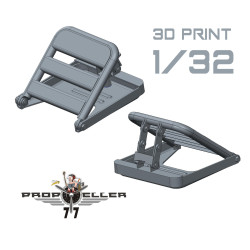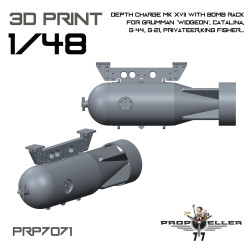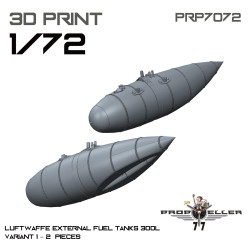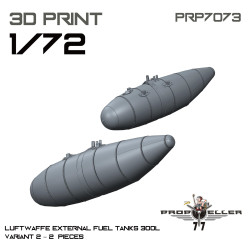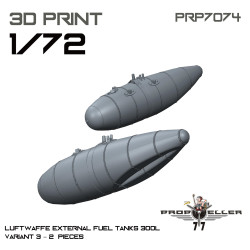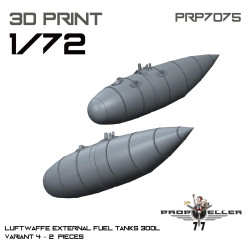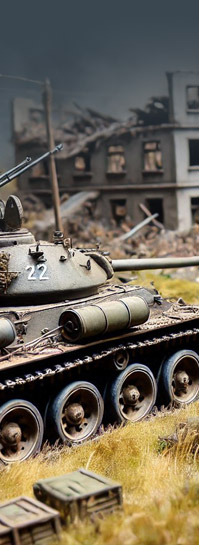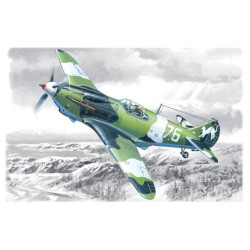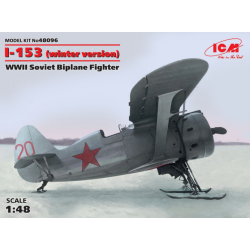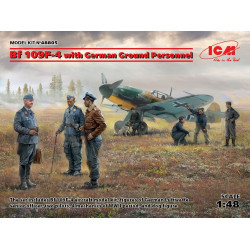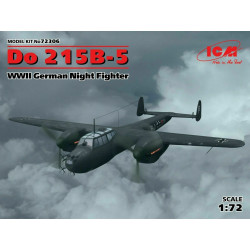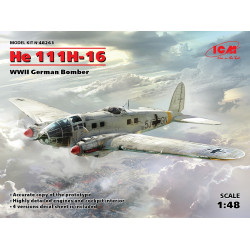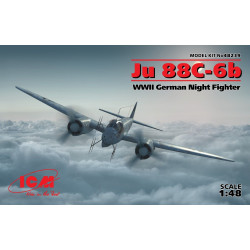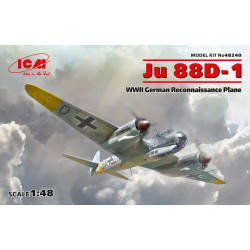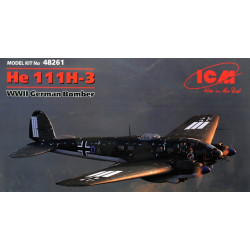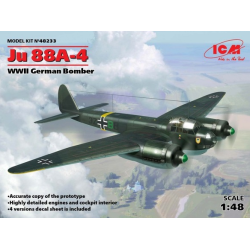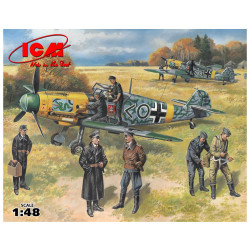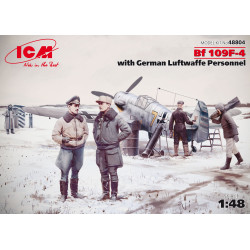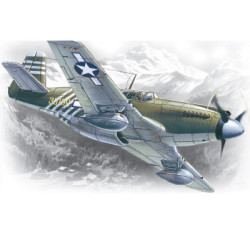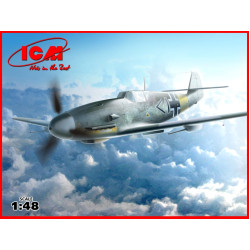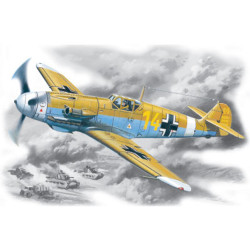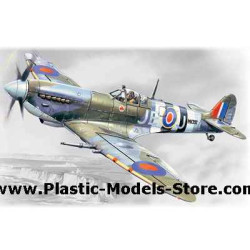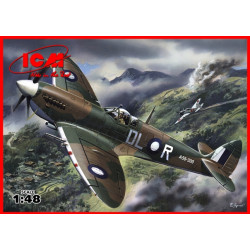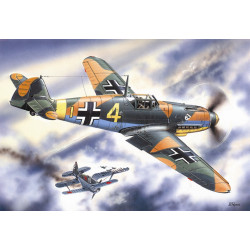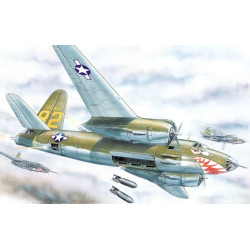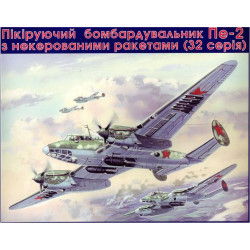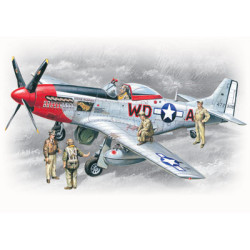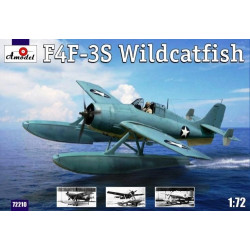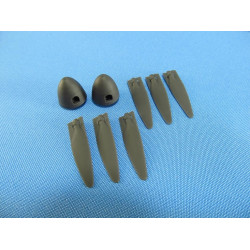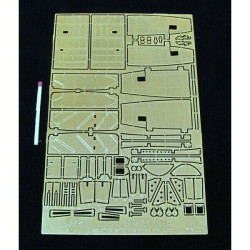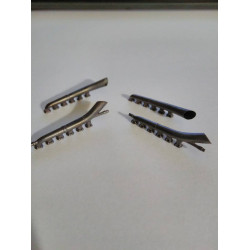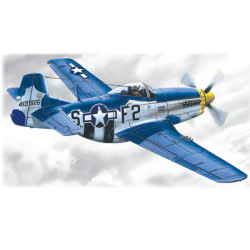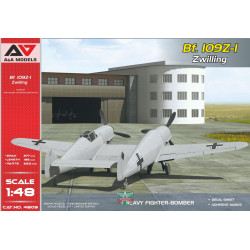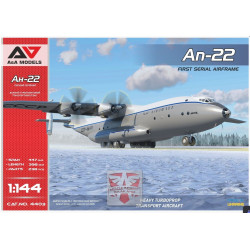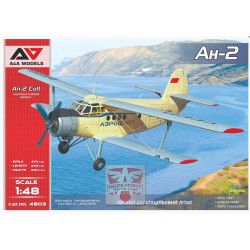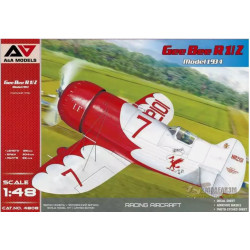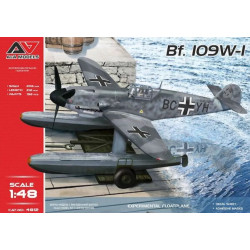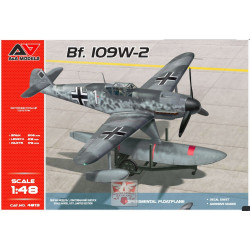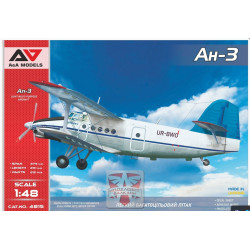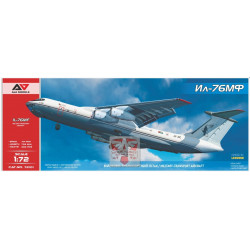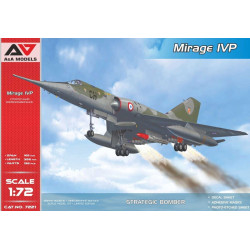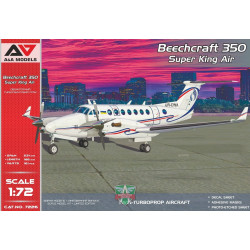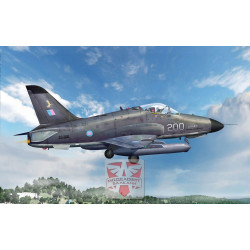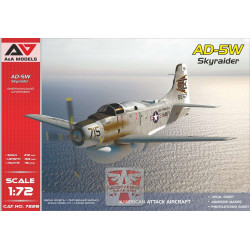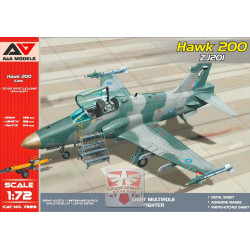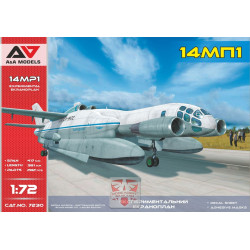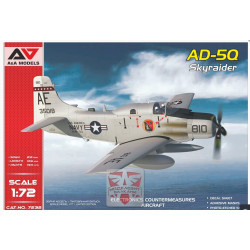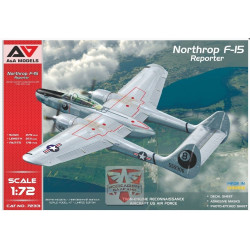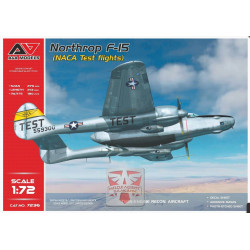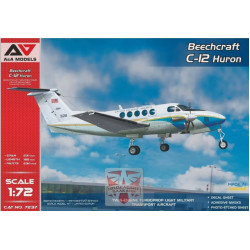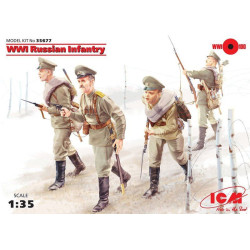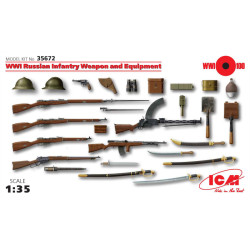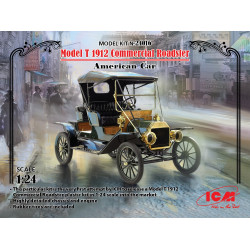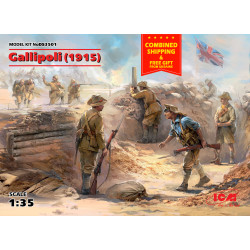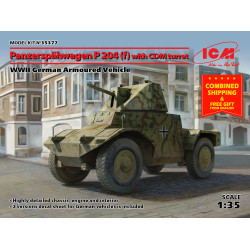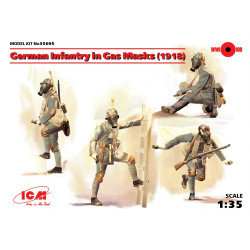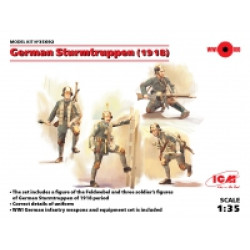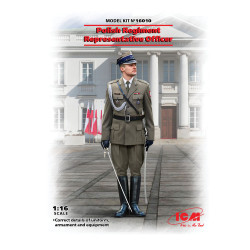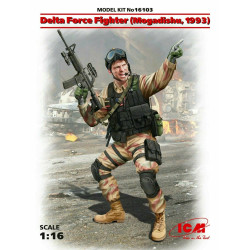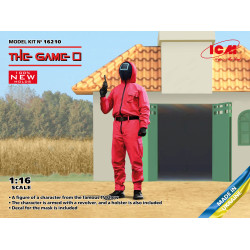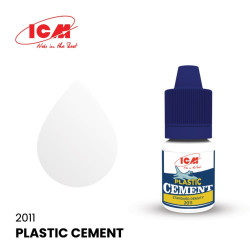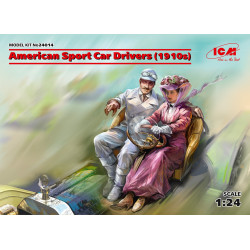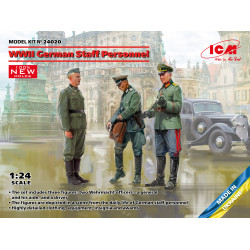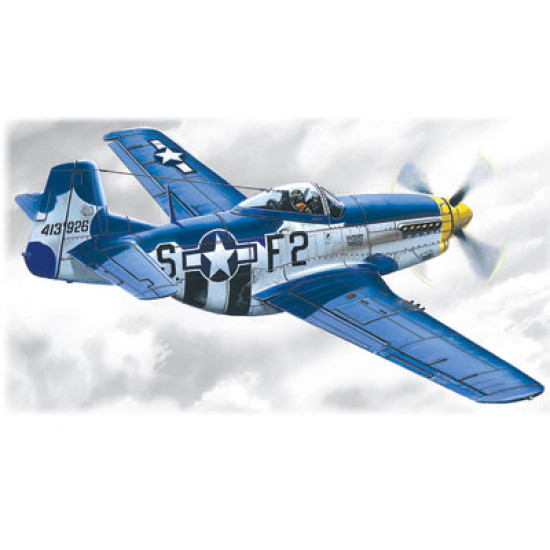
Mustang P-51D-15 Fighter
1/48 military aircraft fighter scale plastic model kit
ICM 48151
High-quality details.
Manufacturer: ICM Models (Ukraine)
Scale: 1/48
Material: Plastic
Paint: Unpainted, Unassembled, Kit do not contain paints and glue.
Condition: New in Box
P-51D and P-51K
The tenth production P-51B 43-12102, prototype for the P-51D, showing the modified rear fuselage and new canopy and windscreen.
Following combat experience the P-51D series introduced a "teardrop", or "bubble", canopy to rectify problems with poor visibility to the rear of the aircraft.In America, new moulding techniques had been developed to form streamlined nose transparencies for bombers. North American designed a new streamlined plexiglass canopy for the P-51B which was later developed into the teardrop shaped bubble canopy. In late 1942, the tenth production P-51B-1-NA was removed from the assembly lines. From the windshield aft the fuselage was redesigned by cutting down the rear fuselage formers to the same height as those forward of the cockpit; the new shape faired in to the vertical tail unit.[30] A new simpler style of windscreen, with an angled bullet-resistant windscreen mounted on two flat side pieces improved the forward view while the new canopy resulted in exceptional all-round visibility. Wind tunnel tests of a wooden model confirmed that the aerodynamics were sound.
The new model Mustang also had a redesigned wing; alterations to the undercarriage up-locks and inner-door retracting mechanisms meant that there was an additional fillet added forward of each of the wheel bays, increasing the wing area and creating a distinctive "kink" at the inner leading edges. Most significant was a deepening of the wing to the allow the guns to be mounted upright, resulting in a slightly reduced maximum speed compared to P-51B/C variants.
P-51D-25-NA possibly flown by Lieutenant Urban L. Drew.: this shows the modified wing with the kinked leading edge and the fillet added to the base of the vertical fin.
Other alterations to the wings included new navigation lights, mounted on the wingtips, rather than the smaller lights above and below the wings of the earlier Mustangs, and retractable landing lights which were mounted at the back of the wheel wells; these replaced the lights which had been formally mounted in the wing leading edges.
The armament was increased with the addition of two more .50 in (12.7 mm) M2 Browning machine guns, bringing the total to six. The inner pair of machine guns had 400 rpg, and the others had 270 rpg, for a total of 1,880. In previous P-51s, the M2s were mounted at large angle to allow access to the feed chutes from the ammunition trays. This angled mounting had caused problems with the ammunition feed and with spent casings and links failing to clear the gun-chutes, leading to frequent complaints that the guns jammed during combat maneuvers. The new arrangement allowed the M2s to be mounted upright, remedying most of the jamming problems. In addition the weapons were installed along the line of the wing's dihedral, rather than parallel to the ground line as in the earlier Mustangs.
The wing racks fitted to the P-51D/P-51K series were strengthened and were able to carry up to 1,000 lb (450 kg) of ordnance, although 500 lb (230 kg) bombs were the recommended maximum load. Later models had removable under-wing 'Zero Rail' rocket pylons added to carry up to ten T64 5.0 in (127 mm) H.V.A.R rockets per plane. The gunsight was changed from the N-3B to the N-9 before the introduction in September 1944 of the K-14 or K-14A gyro-computing sight. Apart from these changes, the P-51D and K series retained V-1650-7 engine used in the majority of the P-51B/C series
P-51K 44-15672 (Lt. Jessie R. Frey of the 362nd FS, 357th FG) shows the Aeroproducts propeller unit with the "uncuffed" blades.
The addition of the 85 U.S gallon (322 l) fuselage fuel tank, coupled with the reduction in area of the new rear fuselage, exacerbated the handling problems already experienced with the B/C series when fitted with the tank, and led to a fillet being added to the base of the vertical tailfin. P-51Ds without fuselage fuel tanks were fitted with either the SCR-522-A or SCR-274-N Command Radio sets and SCR-695-A, or SCR-515 radio transmitters, as well as an AN/APS-13 rear-warning set; P-51Ds and Ks with fuselage tanks used the SCR-522-A and AN/APS-13 only.
The P-51D became the most widely produced variant of the Mustang. During 1945–48, P-51Ds were also built under licence in Australia by the Commonwealth Aircraft Corporation. A Dallas-built version of the P-51D, designated the P-51K, was equipped with an 11 ft (3.4 m) diameter Aeroproducts propeller in place of the 11.2 ft (3.4 m) Hamilton Standardpropeller. The hollow-bladed Aeroproducts propeller was unreliable, due to manufacturing problems, with dangerous vibrations at full throttle and was eventually replaced by the Hamilton Standard. By the time of the Korean War, most F-51s were equipped with "uncuffed" Hamilton Standard propellers with wider, blunt-tipped blades.
The photo reconnaissance versions of the P-51D and P-51K were designated F-6D and F-6K respectively. The RAF assigned the nameMustang Mk IV to the P-51D model and Mustang Mk IVA to P-51K models.
The P-51D/P-51K started arriving in Europe in mid-1944 and quickly became the primary USAAF fighter in the theater. It was produced in larger numbers than any other Mustang variant. Nevertheless, by the end of the war, roughly half of all operational Mustangs were still P-51B or P-51C models.
Australian Production
In November 1944 the Australian government decided to order Australian-built Mustangs, to replace its Curtiss Kittyhawks and CAC Boomerangs in the South West Pacific theatre. The Commonwealth Aircraft Corporation (CAC) factory at Fishermans Bend, Melbournewas the only non-U.S. production line for the P-51.
In 1944, 100 P-51Ds were shipped from the U.S. in kit form to inaugurate production. From February 1945, CAC assembled 80 of these under the designation CA-17 Mustang Mark 20, with the first Australian-built aircraft flying on the 29 April 1945 and the first aircraft was handed over to the RAAF on 31 May 1945. The remaining 20 were kept unassembled as spare parts. In addition, 84 P-51Ks were also shipped directly to the RAAF from the USA.
In late 1946, CAC was given another contract to build 170 (reduced to 120) more P-51Ds on its own; these, designated CA-18 Mustang Mark 21, Mark 22 or Mark 23, were manufactured entirely in-house, with only a few components being sourced from overseas. The 21 and 22 used the American-built Packard V-1650-3 or V-1650-7. The Mark 23s, which followed the 21s, were powered by Rolls-Royce Merlin 66 or Merlin 70 engines. The first 26 were built as Mark 21s, followed by 66 Mark 23s; the first 14 Mark 21s were converted to fighter-reconnaissance aircraft, with two F24 cameras in both vertical and oblique positions in the rear fuselage, above and behind the radiator fairing; the designation of these modified Mustangs was changed from Mark 21 to Mark 22. An additional 14 purpose-built Mark 22s, built after the Mark 23s, and powered by either Packard V-1650-7s or Merlin 68s, completed the production run.All of the CA-17s and CA-18s, plus the 84 P-51Ks, used Australian serial numbers prefixed by A68.
P-51 Mustang
P-51 Mustangs of the 375th Fighter Squadron, Eighth Air Force mid-1944.
Role
Fighter
National origin
United States
Manufacturer
North American Aviation
First flight
26 October 1940
Introduction
1942
Status
Retired from military service 1984, still in civil use
Primary users
United States Army Air Forces
Royal Air Force
Chinese Nationalist Air Force
numerous others (see below)
Number built
More than 15,000
Unit cost
US$50,985 in 1945
Variants
North American A-36
Rolls-Royce Mustang Mk.X
Cavalier Mustang
Developed into
North American F-82 Twin Mustang
Piper PA-48 Enforcer
Rolls-Royce Mustang Mk.X
| General Product Info | |
| Material | Plastic |
| Scale | 1/48 |
| Type | Fighter / Interceptor |
We have the lowest worldwide shipping. And it's totally simple.
EUROPE, USA, CANADA TURKEY, ISRAEL, EGYPT, UE CHINA, JAPAN, HK, S.KOREA | AU NZ MX South America, Asia | |
| Order weight up to 0.22kg or 0.48lb | US$ 8.90 | US$ 8.90 |
| Order weight up to 0.44kg or 0.97lb | US$ 13.95 | US$ 17.90 |
| Order weight over 0.44kg or 0.97lb | US$ 19.99 | US$ 29.99 |
| Order total over $150 | FREE | PROMO US$ 19.99 |
Shipping to some countries not qualifies for the free shipping option but costs not over $29.99 for any sized order. Sorry for that, your location is too far.
- Stock: Out Of Stock
- Model: ICM48151
- Weight: 0.48lb
- DATE ADDED: 27/02/2014
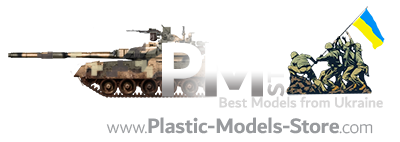
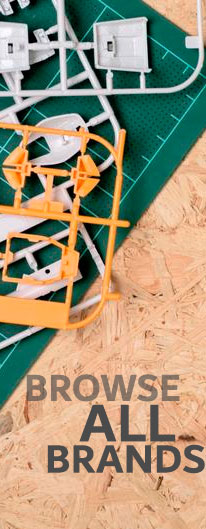
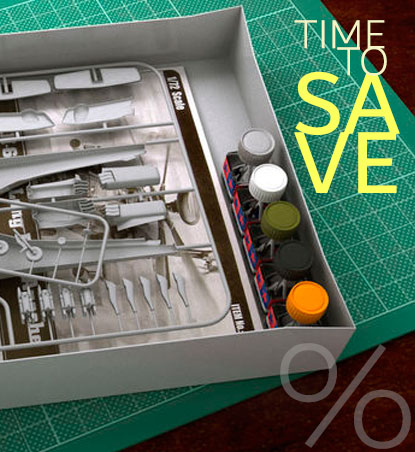
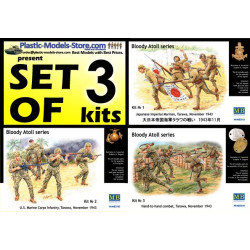
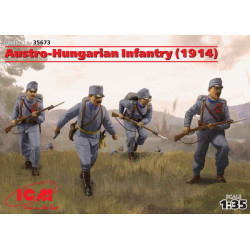
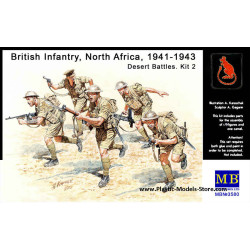
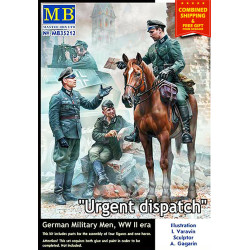
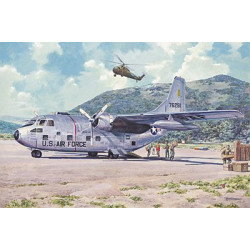
-250x250w.jpg)
